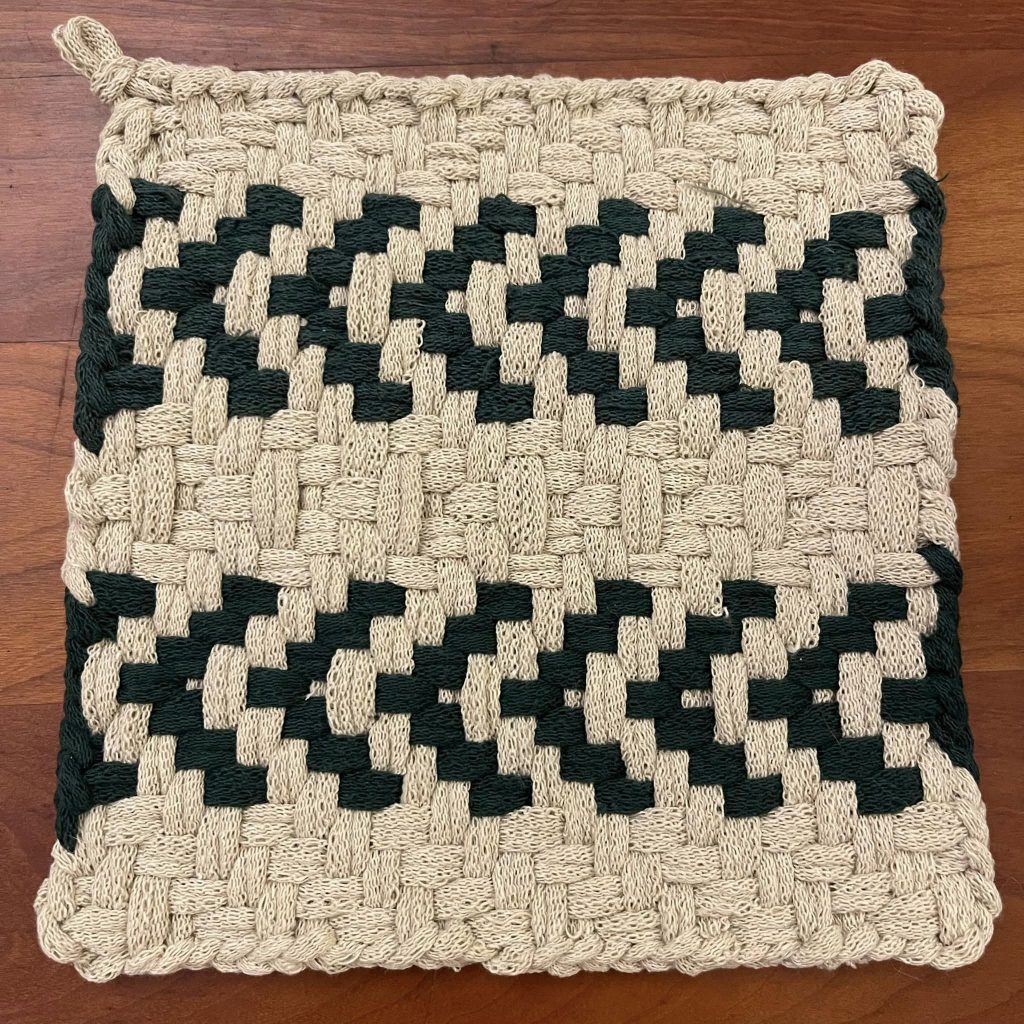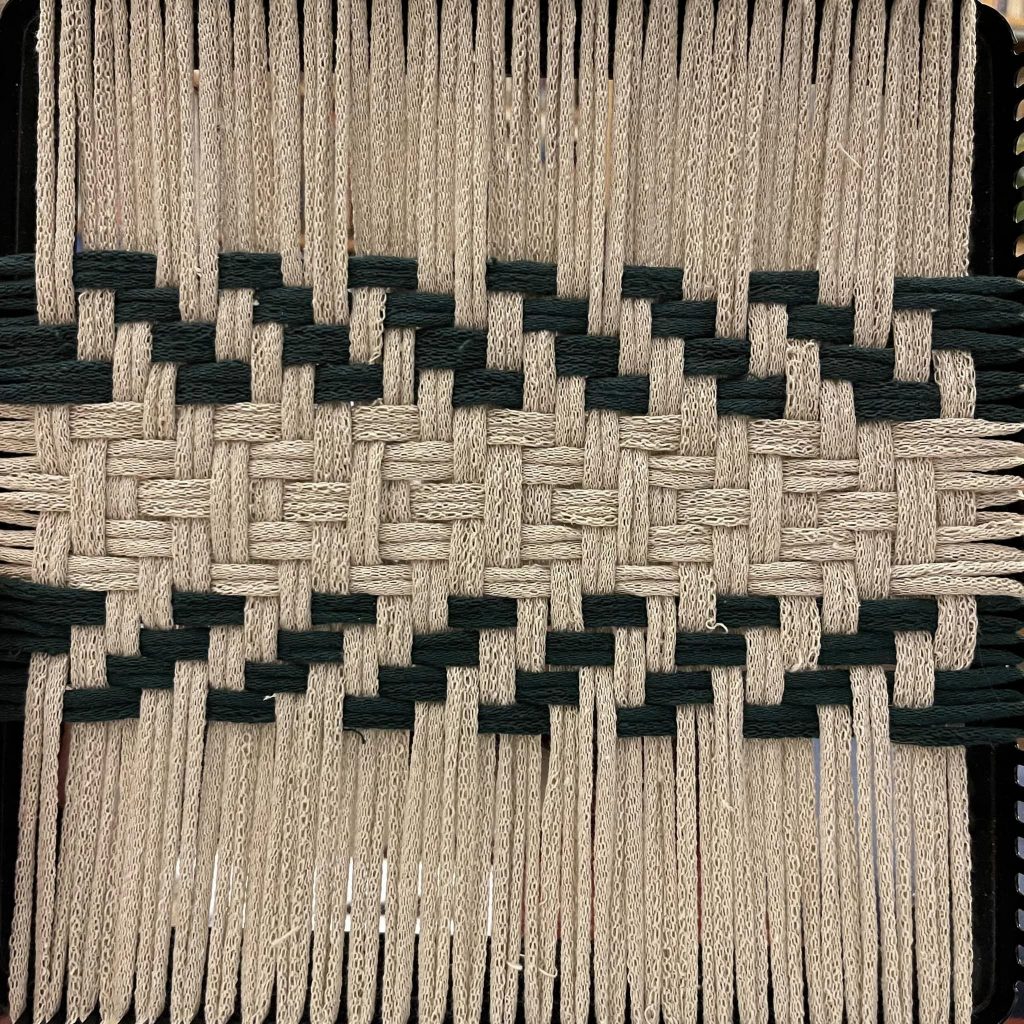Inspired by a 2,700 year old (late Iron Age) textile fragment from a salt mine in Hallstatt, Austria, we have a lovely 2/2 twill with 3 direction changes, generating a regular fabric with 3-floats spread among the columns. The outcome is flexible and drapey, with very little bias, so it does not skew. In honor of the Iron Age culture, I chose flax for the background, and willow (which could be produced by woad overdyed with weld.)
I happened to have 7 loops in an older dye lot of willow. This is a perfect place to use them. The stripes are separated enough that the contrast is not obvious. The pattern change seems deliberate. They will fade in use to be closer in color. And the variation honors natural dying (as you might expect, overdying woad with weld can produce *many* shades).









Here is the chart for this iteration. It is doable in a traditional version, with some design modification. I would not recommend plucking a subset of rows and columns directly from this 27-peg chart.
